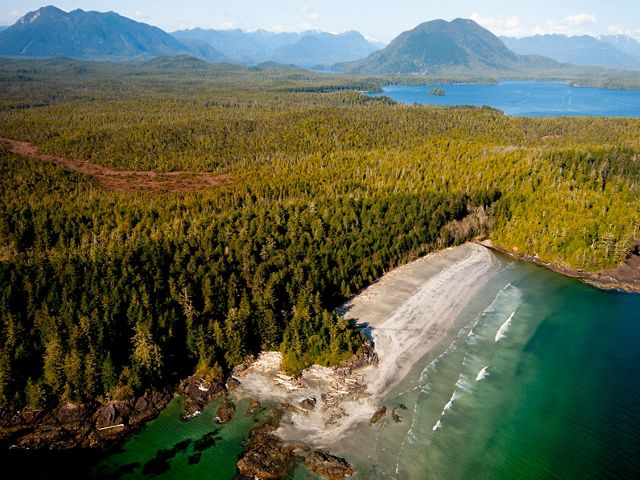
Americans broadly and strongly support conserving and stewarding the country’s oldest forests.
That’s according to polling commissioned by The Nature Conservancy over the summer gauging Americans’ stance on the future of America’s old-growth forests.
While not a familiar term to most, old-growth forests—forests that have grown over a long period of time—are not only anchors of many landscapes across the country but also time capsules of America’s wild past.
From the temperate rainforests of Alaska’s Tongass to the forests of Appalachia, old-growth forests are wildlife habitats, sources of fresh drinking water, drivers of local economies and critical repositories of carbon.


The U.S. Forest Service oversees managing old-growth forests on public lands, including to what extent wildfire treatments like thinning and commercial activity should be allowed.
As the Forest Service considers new approaches to conserving and stewarding old-growth forests on National Forest System lands in the face of development, wildfires and climate change, most Americans want to keep these places healthy for the benefits they bring nature and people.
In May, the bipartisan opinion polling firms FM3 Research and New Bridge Strategies conducted more than 800 phone and online interviews to understand the general public sentiment around forests—in particular old-growth forests—and the management of these forests against threats like wildfire (you can see a memo from the polling firms on this research below).
Of those polled, 55% are unfamiliar with old-growth forests. However, once informed about old-growth forests and the Forest Service’s plans for managing them, 86% of respondents support (with 53% strongly supporting) agency plans to preserve old-growth forests and the benefits they provide while allowing forest management practices like selective thinning and controlled burns to continue.
Quote
Once informed about old-growth forests and the Forest Service’s plans for managing them, 86% of respondents support (with 53% strongly supporting) agency plans to preserve old-growth forests.

Why such broad support for an issue that upon initial exploration, many knew nothing about? There are several possible explanations.
First, voters have a strong connection with the outdoors, not only for themselves but for future generations. In fact, those two messages were the ones that resonated most with voters.
Secondly, voters understand there are serious threats to forests—particularly from wildfire, pests and drought—and that solutions to these problems must be actively implemented.
Thirdly, the Forest Service is a trusted messenger and is seen as a credible entity that should take action to preserve forests and tackle the threats they face.
The Nature Conservancy supports recent Forest Service efforts to better understand and steward mature and old-growth forests.
Not only will taking important climate adaptation steps and reducing threats like catastrophic wildfires help ensure our children and grandchildren experience old-growth forests, but proper forest stewardship can also help us tackle climate change.
Proper, active management of old-growth forests in concert with local communities can reinforce important values voters share about forests across all demographics.
These treasures provide us with a wealth of benefits today. Let’s work together to ensure their future.



